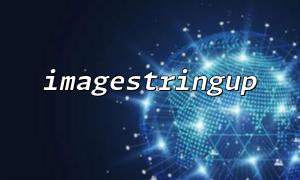<?php
// Start of main content
echo "What to Do When imagestringup() Throws an Error: Common Error Types and Solutions
";
echo " In PHP, the imagestringup() function is used to draw vertical strings on images. However, many developers may encounter various errors while using it. This article summarizes common error types and solutions to help you quickly troubleshoot issues.
echo "1. Common Error Types
";
echo ""
;
echo "
Cause: The GD library is not installed or enabled.
echo "
Cause: The first argument is not a valid image resource, possibly due to image creation failure or an incorrect variable being passed.
echo "
Cause: The font being used does not support the current character encoding, or the string encoding does not match PHP’s default encoding.
echo "";
echo "2. Solutions
";
echo " imagestringup() depends on the GD library. You can check it with: If not installed, install the GD extension according to your operating system and enable it in php.ini.1. Ensure the GD Library is Installed
";
echo "
echo ""</span></span><span>;<br>
</span><span><span>echo</span></span><span> </span><span><span>"phpinfo();"</span></span><span>;<br>
</span><span><span>echo</span></span><span> </span><span><span>"
";
echo "
echo " When creating an image, it is recommended to use: And check before using imagestringup():2. Ensure a Valid Image Resource is Passed
";
echo "
echo ""</span></span><span>;<br>
</span><span><span>echo</span></span><span> </span><span><span>"$img = imagecreatetruecolor(200, 100);"</span></span><span>;<br>
</span><span><span>echo</span></span><span> </span><span><span>"
";
echo "
echo ""</span></span><span>;<br>
</span><span><span>echo</span></span><span> </span><span><span>"if (!is_resource($img)) { echo 'Invalid image resource'; }"</span></span><span>;<br>
</span><span><span>echo</span></span><span> </span><span><span>"";
echo " Ensure strings are UTF-8 encoded and use supported fonts: For Chinese characters, consider using imagettftext() instead of imagestringup() and specify a TTF font file.3. Handle Character Encoding Issues
";
echo "
echo ""</span></span><span>;<br>
</span><span><span>echo</span></span><span> </span><span><span>"imagestringup($img, 5, 10, 90, 'Test Text', $color);"</span></span><span>;<br>
</span><span><span>echo</span></span><span> </span><span><span>"
";
echo "
echo " The parameters of imagestringup() are: image resource, font size, x-coordinate, y-coordinate, string, color. Ensure the types are correct, otherwise errors will occur.4. Check Function Parameter Order and Types
";
echo "
echo " Although imagestringup() is simple, common errors mainly fall into the following categories: By following the methods provided in this article, you can usually troubleshoot problems quickly and improve image processing efficiency.3. Conclusion
";
echo "
echo ""
;
echo "
echo "
echo "
echo "
echo "";
echo "
?>
<?php
// The following content is unrelated to the main article and can be end-of-script operations
$end_time = microtime(true);
if ($debug_mode) {
echo "



